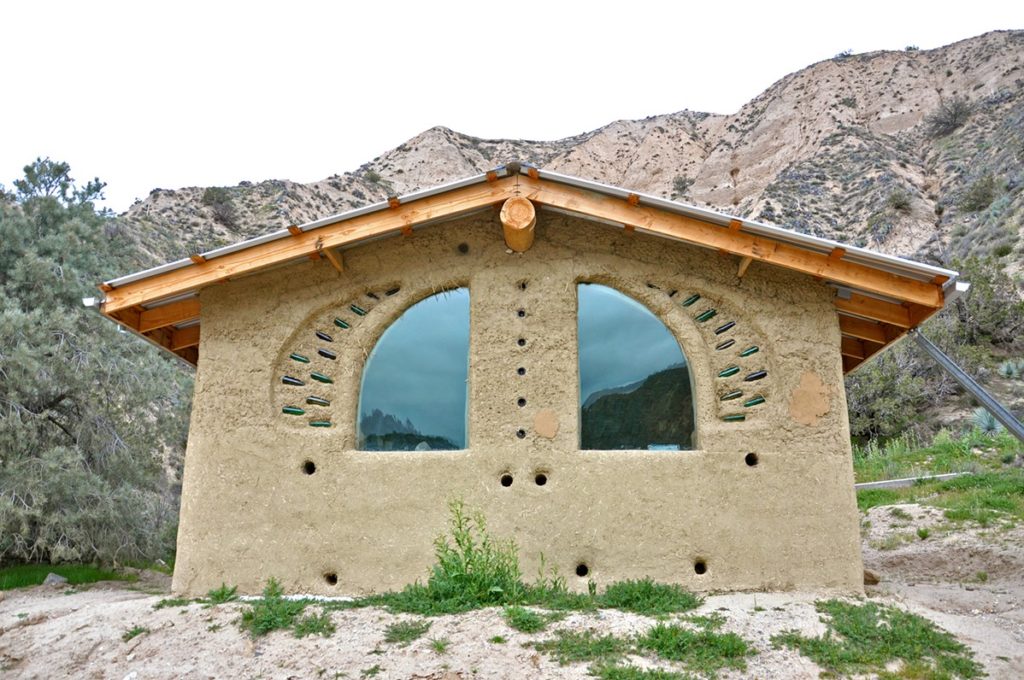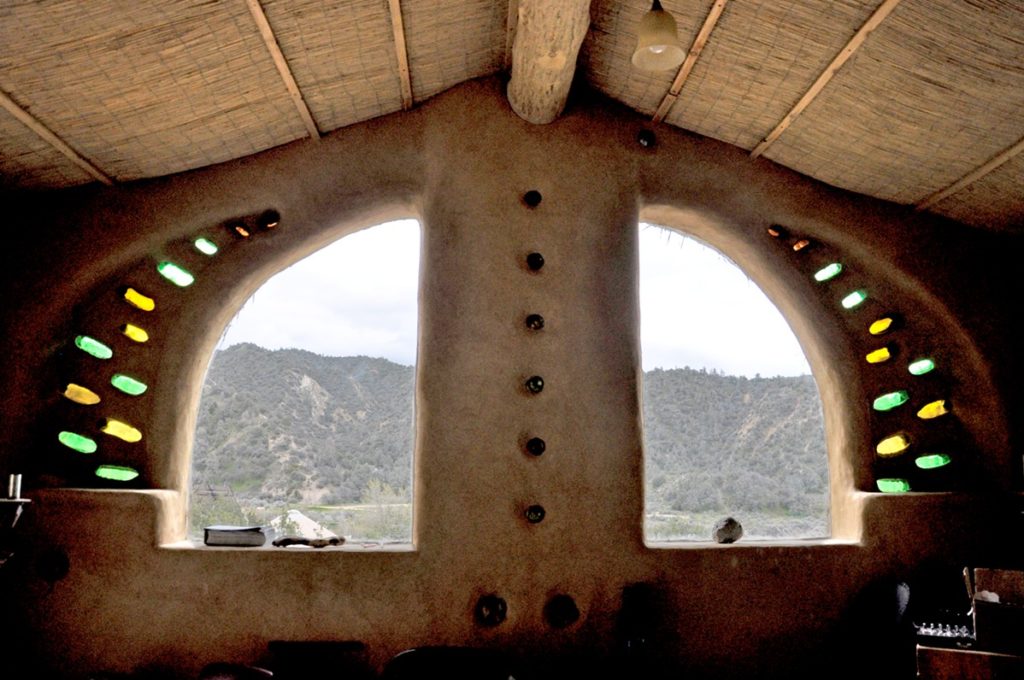Quail Springs is an experiment in sustainable living that is part educational and part social exercise. Living on this 450 acres in California’s high desert is complex, with a farm, a greenhouse, composting toilets, yurts, naturally crafted buildings, 11 staff members, a handful of interns who come and go, and lots of outdoor space. Permaculture is at the heart of everything that’s done there.
Quail Springs is working to bring cob into California’s building codes because it is cheaper, more energy-efficient and less toxic than most conventional building methods. “In order for people to build in urban areas in seismically active zones, we need engineering numbers,” Sasha Rubin said. “We need engineers to be able to stamp our plans to say, yes, this is safe.”
They are working with, Santa Clara University students to performed the first ever full-scale wall tests on four cob walls, some of which were reinforced with different materials, including rebar and a wire mesh. Although straw gives cob tensile strength, Rubin said, other ways of reinforcing walls could be key to incorporate into a potential building code for the state.
“People tend to think about permaculture as a farming technique,” Rubin, who’s in charge of Quail Springs’ natural building, said. “But really, it’s a design system. You could take those principles and apply them to a business.”
“A lot of it has to do with looking around your environment and how to grow something in that environment. … And so natural building systems fit really smoothly into that,” Rubin said. “We design things to be appropriate for a particular climate and a particular environment. … If we were in Alaska, we would be building something different.”
Because Quail Springs is in the high desert, there is only a minimal amount of things that can be grown. They try to grow as much food as possible with surface water. But, of course, they can’t grow everything there, so they try to purchase as much from local farmers as possible. Eggs, milk, and meat are generated on-site. Goat and rabbit manure is composted with food waste and used in the garden. Permaculture is about earth care, people care, and fair share and Quail Springs is attempting to live by that mantra.
You can read the complete article at www.newtimesslo.com

Except for the bottom 3 courses, all the bags in my house are filled with ¼” crushed limestone with dust. No cement whatsoever. They tamp solid and will last as long as any cement mix. Cement is unnecessary.
Hey Kelly you just proved my point the one building you pointed out that you built that you believe will last centuries is made out of volcanic rock I rest my case
Remember pumicecrete is not for everyone there a few good alternative building materials that will work and that’s fine all I am saying is that if you want the best most insulated and most big bad wolf proof home on the planet nothing beats Pumicecrete
Show me a 2000 year old cob home but there is a whole city in Italy that is built out of pumice and the buildings are still standing!!! This city is Rome the Colosseum the pantheon the aqueduct the bath houses seaports iand sea walls to be under salt water for 2000 years still standing today all made out of pumice can you build a ceiling or a floor out of cob can you build a shower out of cob can you build a hot tub out of cob can you build countertops out of car yeah yeah but Pumice is way better and only takes three materials pumice cement and water in the ratio is 10 to 1 ithas a very low cement content and you can use a lime based binder which uses a lot less energy to make there is nothing that even comes close if you want to build the best home on the planet Pumicecrete is your only choice nothing even comes close will your building material last 2000 years mine will
The Great Wall of China was built nearly 3,000 years ago with stone, brick, tamped earth and other natural material and is still standing. The Egyptian pyramids were crafted of stone even before that. I built my earthbag house with bags of scoria (like pumice, a volcanic stone) without Portland cement and I expect it to be around centuries from now. I like pumicecrete and feel it has many worthwhile uses, but it is not the only reasonable choice.
A much better building material is pumicecrete
Pumicecrete has its place, but it is difficult to make the case that it is better than cob or other earthen materials. Pumicedrete does use Portland cement, an industrial pollutant, and the pumice is only available on a local basis in few places, so it has its problems in terms of sustainability.